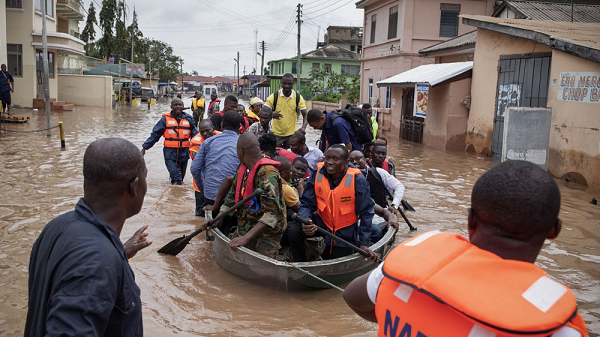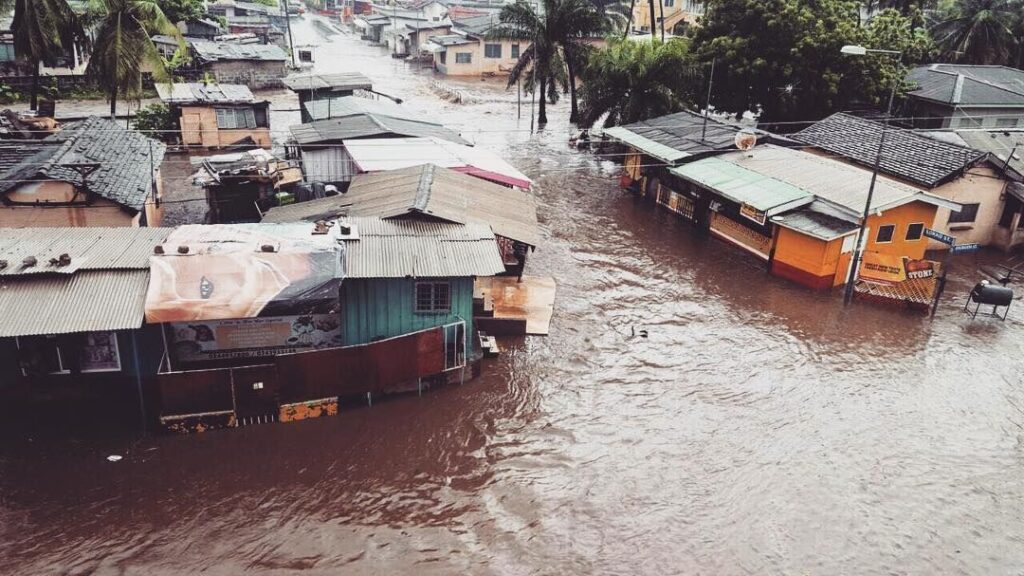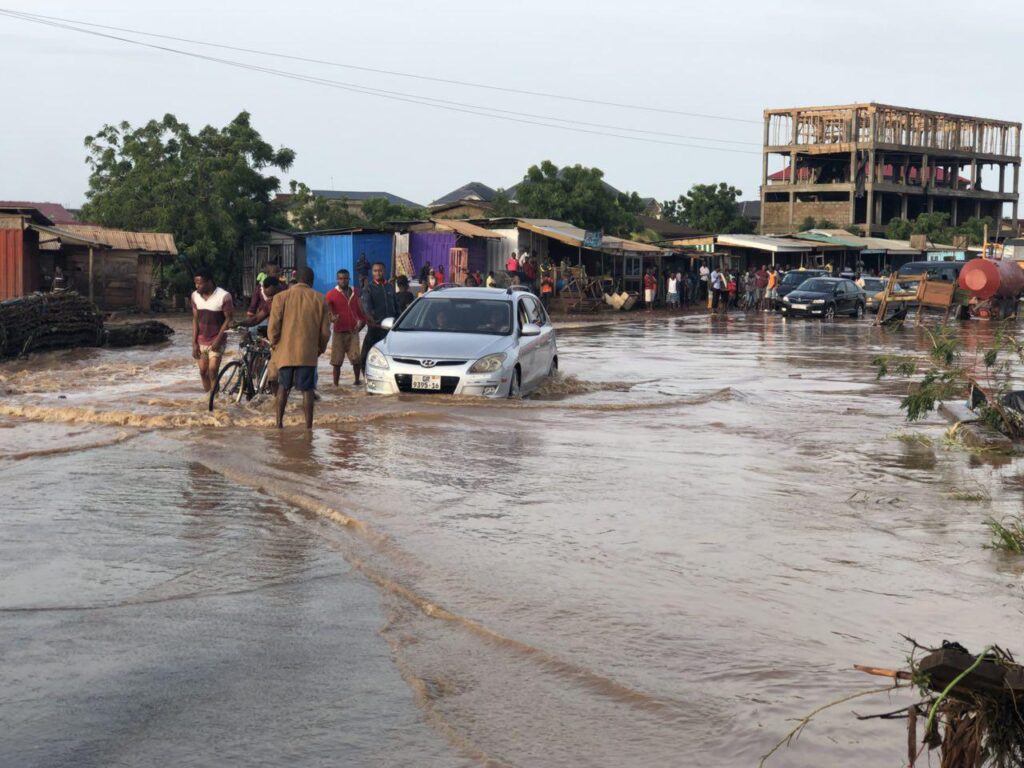
Floods are mostly triggered by seasonal rainfall combined with poor drainage, the dumping of waste into waterways and the low elevation of settlements.
Recently, Ghana has seen some heavy downpours leaving some areas flooded and causing the death of some Ghanaians. During heavy rainfall, it’s difficult for motorists to drive which leaves them with no other option than to park at safe places until the rains are over.
The Accra Metropolitan Assembly (AMA) has released a list of some of the flood-prone areas in Accra and some of these areas include Sakaman, Kamara Down, Atico Bridge, Abolo-Junction, Mataheko, Atico Junction, Kaneshie Lorry Station Areas, Portions of East Legon, Zamariama Line, Banana Inn, Abelenkpe, some parts of Dzorwulu, Sukula, Russia, Bawaleshie, Airport Residential, Glefe, Mpoase, Dansoman, Odawna(Kwame Nkrumah Circle).

Flooding in the capital is mainly caused by poor planning of towns and cities, poor drainage systems, improper disposal of refuse, silting and choked drains, improper enforcement of laws on building construction and sanitation.
There is some good news amid all these bad floods happening. The AMA has also released a list of Safe zones for residents.
The Assembly in a publication identified fourteen (14) low lying areas within its precincts which it says are prone to flooding, and matched them with open areas as safe havens for residents.
Below is a list of flood prone areas and safe havens where the public in the identified communities are expected to seek shelter in case of any eventuality with respect to flooding or any other disaster that may accompany it.

The Housing Minister (Mr Samuel Atta-Akyea) said it will cost Ghana over $700 million to effectively and permanently deal with the perennial flooding in the Greater Accra Region alone.
He held that Ghana had the technical expertise to deal with the flooding once and for all but was only in need of funds.
He has in the past indicated that the government had put together a road-map to provide a permanent infrastructure solution to the flooding problem.
Flood Proofing your Home
There are several measures you can take to protect your home against flooding.
Some of these steps may include
- Sealing up any cracks in your foundation. You can purchase some very affordable mortar or masonry sealant which can be used to fill in any gaps in the foundation completely. However, if water continues seeping into your home, you may want to look for a more permanent fix which may be cost-effective.
- Also, one can apply coatings and sealants. These can be applied to your walls, windows, foundation and doorways which will help keep water from penetrating your home. These sealants can be purchased from any hardware stores.
- One can also buy a sump pump. Sump pumps are one of the best preventive measures against flooding in your home, some of which come battery powered in case there is no electrical power. They work by pumping the water out to the outside. it is best to buy the type that runs on battery power (and be sure to keep it charged up!).
- Another preventive measure can be the relocating of any expensive or sentimental items to higher ground. If you have a multiple story home and flooding begins, moving your valuables to the second or third floor will help to protect them if damaging flood waters are able to breach the first floor.
- There are also gadgets that can also help in flood proofing, one of these gadgets can be a flood sensor. Most home security systems offer flood sensors as add-on feature. These devices detect small leaks before they can cause significant damage, saving you potentially thousands of money to repair.
You can also have sewer or septic line check valves installed. These allow waste to be able to flow only one way which protects against sewage flooding your home. You can have a professional install these or go the DIY route.
One can also relocate or keep your electrical outlets and switches raised. All electrical equipments should be at least one foot above flood level to help reduce the risk of electrical damage or electrical shock. Water heaters, washing machines, air conditioners, etc. should all be raised above flood level,
If your lawn or compound is tilted towards your house, this allows rainwater to stagnant there and have a better chance of seeping in. If you are unsure of how to grade your lawn, hire a professional.
Read Also: 8 Best places to stay or rent in Accra
Related post: Understanding Performance Enhancement Drugs: Benefits, Risks, and Recommendations
Sometimes, no matter the preventive measures put in place, flooding is imminent. Luckily, there are some things that you can do to help minimize the damage.
- Be sure that your gutters and drains are clear to allow water to flow freely through them
- Put in place sandbags to block any gaps that could lead to flooding
- If flood water rises above the perceived level where it is close to reaching your electric outlets, switches and electrical gadgets, shut it off to prevent electrical damage
- Windows and doors can be opened during rains to allow air to circulate through your home in order to dry things out.
- Make sure your sump pump is turned on and in good running condition
- Get in contact with a professional contractor to assess your home’s issues and determine the best ways to protect it from flooding. As long as you are prepared, you can take care of flooding issues before they get out of hand.